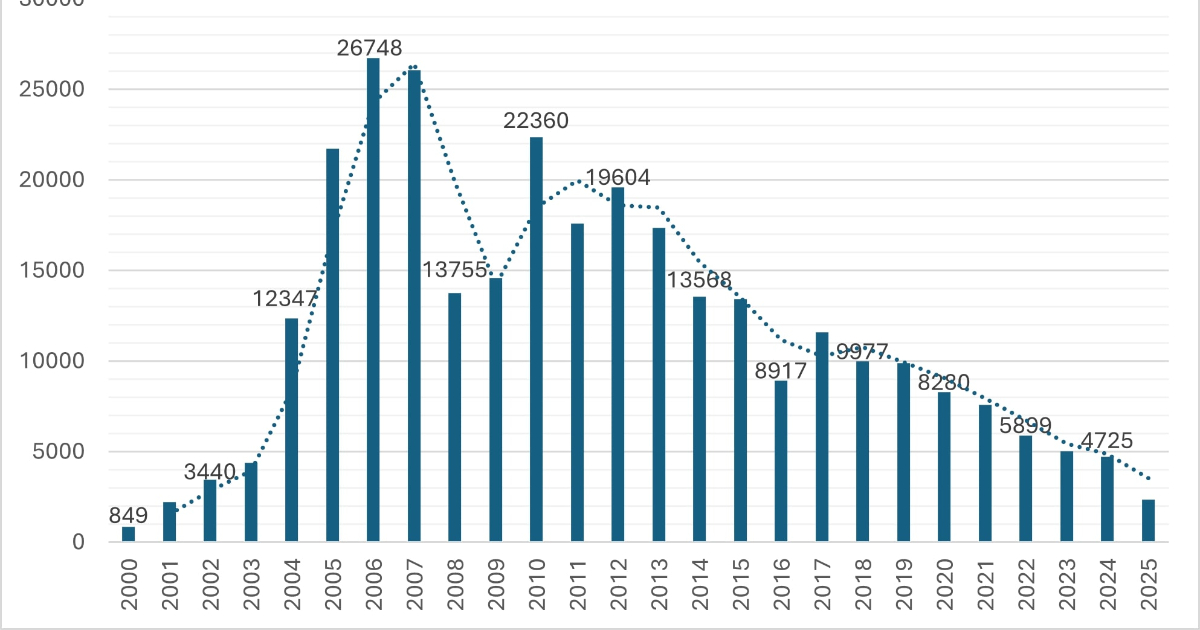Analyzing qualitative data is complex. Moving from raw text to clear, insightful themes can be overwhelming. This guide provides a toolkit of advanced ChatGPT prompts designed to simplify that process.
These prompts help you move from initial data preparation to final narrative construction. They are built to help you think critically, organize code, and uncover deeper patterns in your data.
To use a prompt, copy it and replace the bracketed text with your own information. Let’s turn that mountain of data into a clear, compelling story, together.
I. Data Preparation and Initial Immersion
This section provides prompts to organize your raw data and conduct a preliminary exploration, helping you understand its scope and key elements before formal coding.
1. Structured Data Summary
This goes beyond a simple summary by asking the AI to focus on key qualitative aspects.
- Act as a qualitative research assistant. Read the following text data and provide a structured summary. The summary should be organized into three sections:
- Key Topics Discussed: A bulleted list of the main subjects covered.
- Key Emotions and Sentiments: Identify and list the core emotions (e.g., frustration, excitement, ambivalence) found within the text, providing a brief excerpt for each.
- Critical Incidents: Describe any specific stories, turning points, or significant events described in the text.
Data Excerpt: “
[Paste your anonymized text data here]“
2. Identifying Initial Concepts and Jargon
This helps you quickly grasp the language and key ideas within your data source.
- Analyze the following set of text data. Identify and list all recurring jargon, acronyms, or key concepts that seem central to the experiences described. For each item, provide a brief, context-based definition based on how the term is used within the data.Data: “
[Paste your anonymized text data here]“
II. Open Coding and Initial Theme Development
Use these prompts to systematically break down your text into foundational codes and begin clustering them into emergent thematic categories.
1. Generating Descriptive and In-Vivo Codes
This prompt performs detailed, line-by-line open coding, a foundational step for many QDA methods.
- Act as a qualitative researcher conducting open coding. Analyze the text segment below. Generate a list of descriptive codes that capture the essence of each idea. Where possible, use “in-vivo” codes (using the original wording from the source text). Present the output in a table with two columns: “Source Text” and “Generated Codes”.Text Segment: “
[Paste a paragraph or section of your text data here]“
2. Grouping Codes into Preliminary Themes (Axial Coding)
Once you have a list of codes, this prompt helps you cluster them into meaningful categories.
- Act as a qualitative analyst. I have a list of open codes from my data. Your task is to group these codes into 3-5 potential preliminary themes based on conceptual similarity. For each theme, provide a provisional name and list the codes that belong under it.My Research Question: “
[State your main research question for context]”
My Codes: “[List your generated codes here, e.g., 'fear of failure', 'seeking peer approval', 'pressure to succeed', 'imposter syndrome', 'learning from mistakes']“
III. Building and Refining a Codebook
These prompts assist in structuring your analysis by transforming preliminary themes into a formal codebook with clear definitions, rules, and examples.
1. Creating a Structured Codebook
This prompt transforms your preliminary themes into a formal codebook ready for systematic use.
- Act as a research methodologist. Based on the following themes and codes, generate a formal codebook. The codebook should be a table with the following columns: “Theme Name”, “Definition”, “Inclusion Criteria” (rules for when to apply the code), “Exclusion Criteria” (rules for when not to apply it), and “Example Excerpt” (an excerpt from my data that exemplifies the theme).Themes and Codes: “
[Paste your list of themes and the codes grouped under them]”
Example Data Snippets: “[Provide a few relevant excerpts from your data]“
2. Refining and Differentiating Themes
This prompt helps you sharpen your analysis by ensuring your themes are distinct and well-defined.
- Review the two themes below from my codebook. They seem to overlap. Help me differentiate them by:
- Rewriting their definitions to create a clearer distinction.
- Suggesting a new name for one or both if necessary.
- Explaining the core difference I should look for when coding.
Theme 1: “
[Name and definition of the first theme]”
Theme 2: “[Name and definition of the second theme]“
IV. Deeper Analysis and Pattern Recognition
These prompts are designed to move beyond simple categorization, helping you uncover the complex relationships, patterns, and contradictions within your data.
1. Comparative Analysis Across Data Segments
This is useful for exploring differences between different sources or segments of your data.
- Act as a comparative analyst. Based on the provided data excerpts from two different data segments, compare and contrast their content regarding
[your topic of interest]. Structure your analysis as follows:- Shared Perspectives/Concepts: Identify themes or ideas that are common to both segments.
- Divergent Perspectives/Concepts: Highlight the key differences in their content, tone, or language.
- Illustrative Excerpts: Provide one excerpt from each segment that best illustrates a point of divergence.
Segment A Data (
[e.g., Forum Posts from Community A]): “[Paste excerpts from the first segment]”
Segment B Data ([e.g., Official Documentation]): “[Paste excerpts from the second segment]“
2. Identifying Negative Cases
A hallmark of rigorous qualitative research is actively looking for data that contradicts your emerging themes.
- I have identified a dominant theme in my data: “
[Describe your dominant theme, e.g., 'The emerging theme suggests that users find the new software intuitive.'].”Review the following data. Identify any “negative cases” or disconfirming evidence—any excerpts, statements, or observations that challenge or contradict this dominant theme. List each piece of negative evidence and briefly explain why it serves as a counterpoint.Data Set: “[Paste relevant anonymized text data here]“
3. Mapping Thematic Relationships
This prompt helps you transition from a list of themes to a conceptual model.
- Analyze the relationships between the following themes I’ve identified in my research on
[your research topic]. Suggest potential relationships between them (e.g., causal, hierarchical, influential, paradoxical). For example, does Theme A seem to cause or lead to Theme B? Is Theme C a component of Theme D? Present your analysis as a list of proposed relationships with a brief justification for each.My Themes: “[List your final, refined themes with brief definitions]“
V. Interpretation and Narrative Construction
In this section, prompts are focused on synthesizing your analytical findings into a coherent narrative and developing a higher-level theoretical understanding of your data.
1. Developing an Interpretive Narrative for a Theme
This helps you move from a simple description of a theme to a rich, interpretive story.
- Act as a research narrator. I have a theme titled “
[Theme Name]” and several supporting excerpts. Write a rich, interpretive paragraph for a findings chapter. The paragraph should:- Introduce the theme with a clear topic sentence.
- Integrate at least two of the provided excerpts to support the interpretation.
- Explain the deeper meaning and implications of the theme and answer the “so what?” question.
Theme: “
[Theme Name]”Definition: “
[Provide your theme's definition]”Supporting Excerpts:
- “
[Excerpt 1]“ - “
[Excerpt 2]“ - “
[Excerpt 3]“
2. Generating a Theoretical Framework or Conceptual Model
This is an advanced prompt to help synthesize your entire analysis into a high-level model.
- Based on my research question and the following key themes and their relationships, help me brainstorm a preliminary conceptual framework.
- Identify the central phenomenon or core category.
- Suggest how the other themes relate to this central phenomenon (e.g., as causes, consequences, mediating factors, or contextual conditions).
- Propose a title for this framework.
Research Question: “
[State your research question]”
Key Themes and Relationships: “[Summarize your themes and the relationships you mapped in step 4.3]“
3. Drafting a Methodological Reflection (Reflexive Memo)
Reflexivity is key to quality research. This prompt aids in that critical self-reflection.
- Act as my critical research partner. I am writing a reflexive memo about my analysis process. Based on my summary below, generate a few reflective questions for me to consider. The questions should challenge my assumptions, prompt me to consider alternative interpretations, and think about how my own positionality might have influenced the findings.My Research Summary: “
[Briefly describe your research topic, your main findings, and one or two challenges you faced during analysis.]“
Also, Check These Prompts:








